Kriti Tula
Founder & Creative Director - Doodlage
Kriti Tula is a Fashion Designer and Founder of Doodlage. A graduate of Pearl Academy of Fashion and London School of Fashion, she is among the first to make inroads into the sparsely known field of sustanability in Fashion. Keep reading to get an insight into her life as a designer.
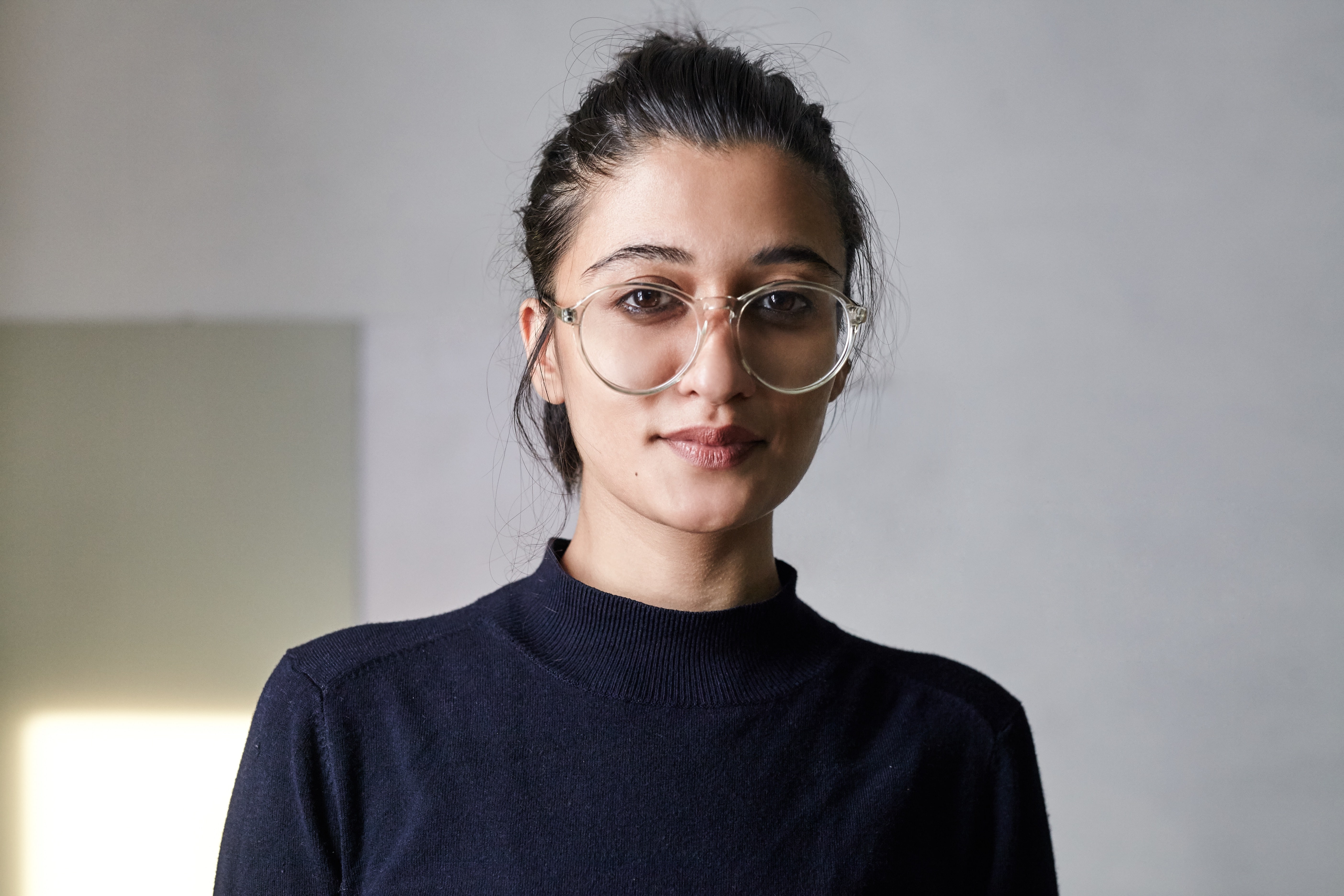
So tell us about Doodlage and what do you guys do?
About Doodlage—Upcycling—Journey so far
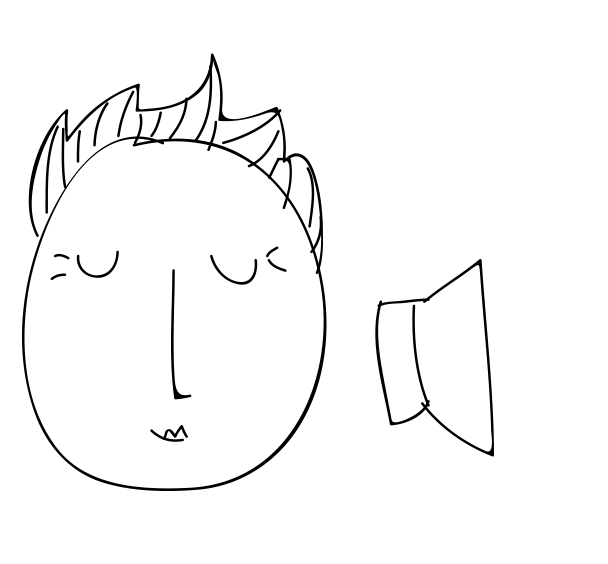
How did you come up with the idea?
It’s a completely sustainable brand. The idea is to produce garments that are completely upcycled. If we take a look at the numbers—about 16% of the fabric goes to waste to the point where the product itself is cut from the length of the fabric. About 6-7% of wastage is generated while stitching the fabric into a garment. About 0.9% of the wastage comes from rejection of the fabric due to numerous reasons such as color defects, holes and marks. India is one of the largest producers internationally, so the wastage comes to about billions of square meters of fabric. Hence we decided to work on the idea of using what was leftover; which was produced for something else and has been rejected for various reasons.
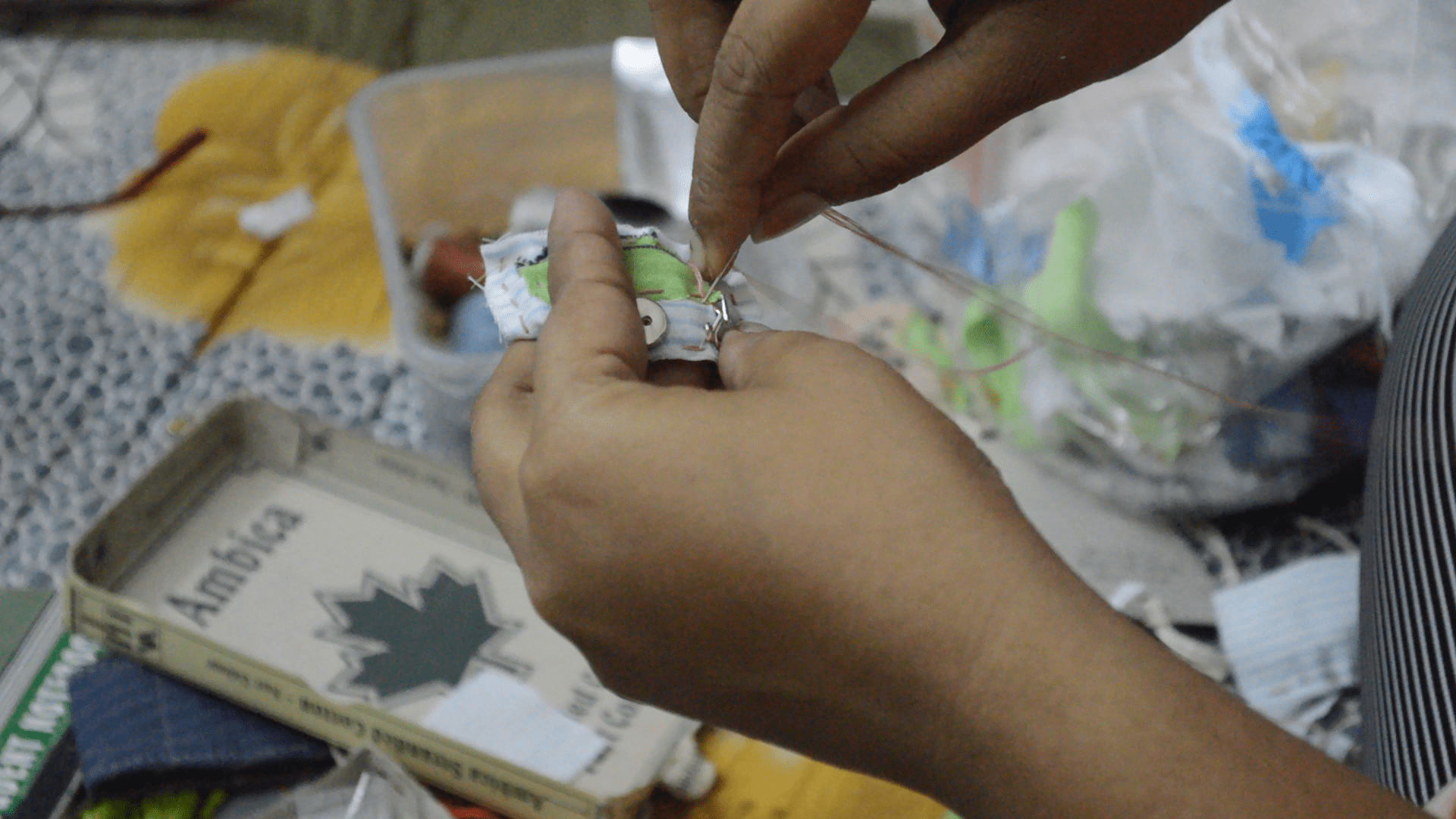
Tell us about your educational background?
I completed my graduation in design from Pearl Academy in 2010. Worked for the next two years and then applied for a Masters in Design Management at London College of Fashion. I wanted to explore a wider market to get a feel of what was happening internationally and also there were clusters which intrigued me, like the Center for Sustainable Fashion. Got a scholarship. Stayed in London for about two and a half years and came back in 2014. I was working for some ventures for the next two years along with Doodlage. From 2017 I have been working full time on Doodlage.
What is your team size?
I started with one person coming to my house and doing my samples — back in 2012. It used to take him three hours to get to the house. It was quite painful then. He’s still with me. I have one assistant designer and a lot of interns who keep coming and they are extremely valuable to the firm as they always bring in a fresh perspective. Every designer or intern who joins Doodlage, I would like them to have as much experience as possible. I have retained everybody who have been with me since the beginning. Hopefully they are happy to work for me(laughs). We are currently a team of 30 people. Pretty much largely of tailors, masters and embroiders.
Tell us about the work culture at Doodlage?
About the office space—Alloting work to everyone—Not fired anyone yet—Doubts—Supporting families

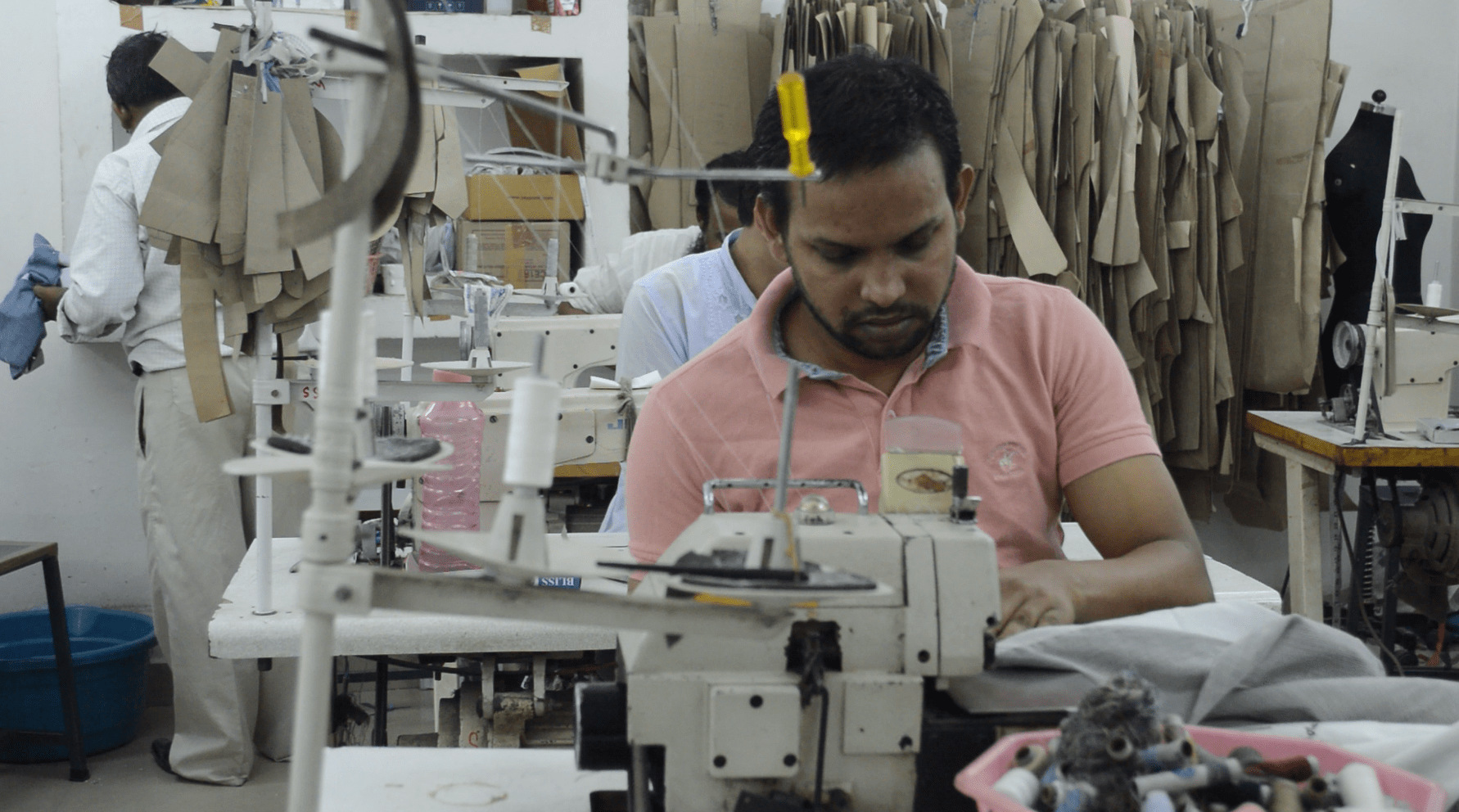
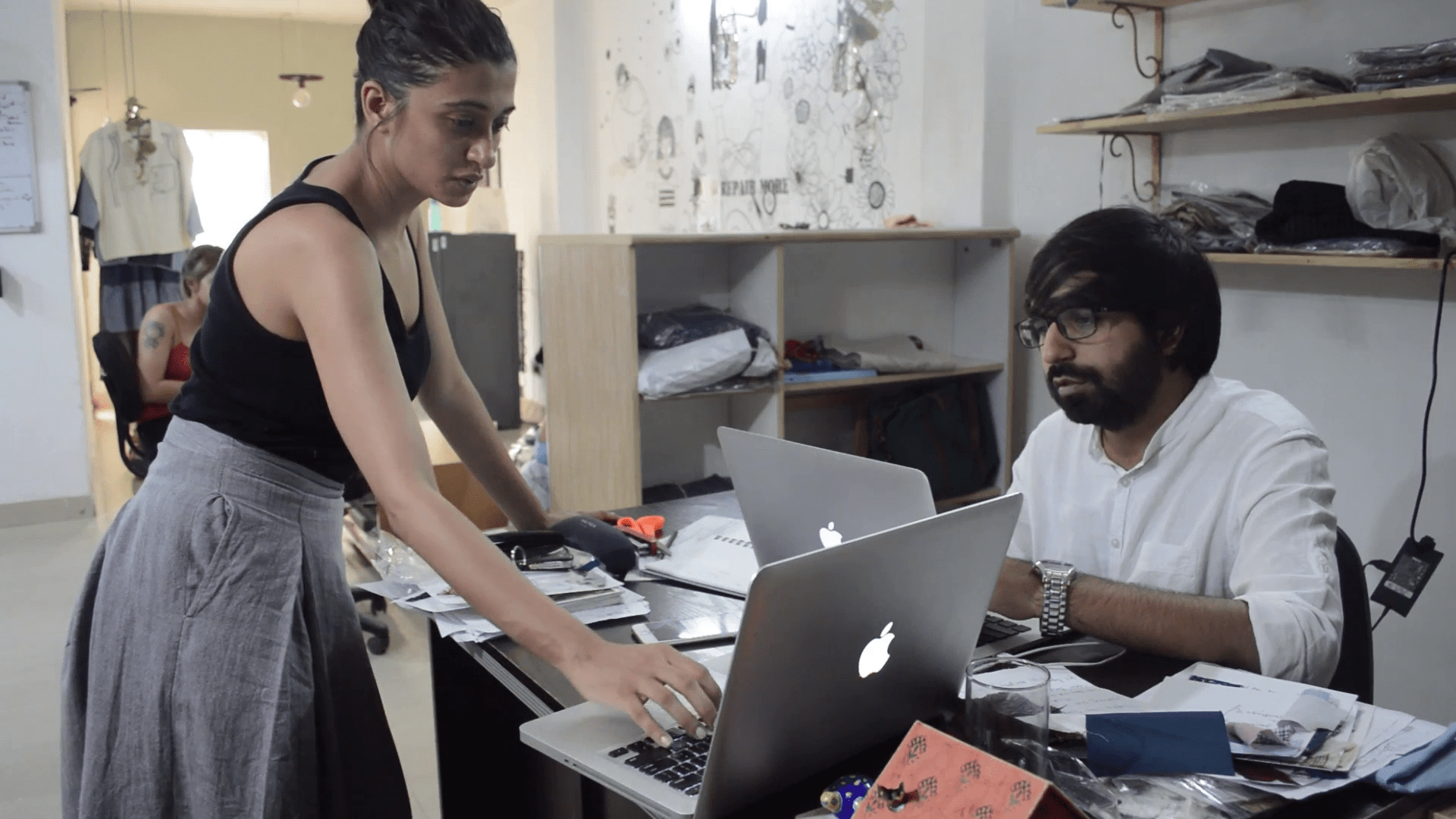
Doodlage Work Space
What is your Design Process?
For most of the designs, the process starts from sketching the ideas. For a brand that is upcycling, it has to start from the raw materials that they source and the discards that come to you. You know you can imagine your collection to have a lot of flair, lot of layers and be full of glamour but in our case, when you go into the market to source fabrics which are otherwise defective and you have nothing that matches your inspiration then you have to start over. Now, what we have learned is to first source the raw materials and then think about an inspiration that brings or glues everything together. The fabric and the raw material itself inspires you to create something different. So you start with sourcing the fabrics and then you start sketching and you start developing your surface treatments, whether to patch fabrics (with us that is not an option). Then you start embroidering over them. Subsequently, you develop a selection of prints and embroidery and transition to putting the silhouettes together. This is how I work. Different designers have different methods.
What is your typical day like?
I start very early in the day. I get up at 6 and then do yoga and reach office by 9:30. First I head to the production floor and sort the day for everyone there. I brief the person heading the unit about the pieces that definitely have to go out today, on the possibility of overtime on that day; little details to keep work in order. After that, I go to the designers and the interns’ space and work on the new collection, deciding on the look of the photoshoot etc. In the middle of the day there’s a lot of chirping and lunch orders and coffees. We shut off around 8pm everyday. From there, I head home—go for a swim—relax with family or friends.
Do you travel often?
I travel for work and inspiration. If you ask me what I want to work for, it’s travel. That’s it! I want to earn enough money so that I don’t have to think before I travel. It works like a rejuvenating exercise. A calmer mind can design better. Every now and then, you start questioning everything. You see your designs so much that you start speculating about whether you are a good designer or not? Which is when you decide that now you need to travel. You go out and see other people’s work, what’s happening around the world and you just come back feeling fresh. For leisure, I take one International trip and one within the country every year, for sure. Except for RaniKhet, which is my mother’s hometown, I don’t think I have travelled to the same place again. My vacation time is also around 10-15 days so that I get to know the place very well.
Tell me about the Ups and Downs you have faced since you started working on Doodlage?
For me it was quite a bit of a learning curve since 2014. There were no established brands in sustainable fashion in India, so we had to figure it out for ourselves. You do not have a brand that you look upto and say, “this is the pattern”. We didn’t have a clear idea about the kind of stores would be beneficial for us or who were the clients? Where do we find the raw materials among other things?
As nothing was set, you had to first convince the people to give you the raw material. We do get our fabrics at a pretty decent cost but there is a lot of work that needs to be done on those because they are discards. A lot of work goes into fixing the fabric—working around the right fabrics—patching—working with an individual piece and realizing that we cannot cut it into layers and layers of fabric. This was a struggle!
There was also considerable time spent in pondering over questions like whether to be a multi-designer store or to set yourself in mass retail shops like Shoppers Stop, Lifestyle etc.
After all of that, you also need to make the consumers aware about what you’re doing. You need to market as well as communicate whatever you’re doing.
All in all there was a lot of struggle in the first two three years. Now after three years of putting our heart and soul, and money into it, I have sorted out most of the issues that we used to have in the beginning.
Now people call us up and say,“this is our fabric waste, please take it away”. Feels so good that now people know what you do. Things are looking up. It’s becoming easier with time.
What are you working on currently?
Autumn Winter 17'—Work related to it

Piece of work that you're proud of?
That’s a tough one. I think every collection has its own favorite pieces. A lot of times your favorite piece will not end up selling and the one you do not have a liking for will sell like cupcakes. It’s so stupid.
Just yesterday, there was this piece that I had decided on not making it a part of the collection. It has already sold 3 pieces from people who have just come into the store.
How? Why? What is wrong with me?(laughs). Even though you are in the industry and you are in touch with the consumer, even then, sometimes you just don’t know what works for them at times.
What is design for you?
For my brand, design became a solution for the problem of a lot of fabric waste. Something that is balanced, aesthetically sound and solves a problem is design.
How important is the process in comparison to the final product? How do you see the process lending itself to what you wanted to do?
For a product that you are going to sell into the market, it’s equally important that your end product is valued by the customer. They don’t care about the process that went into creating the product. Your end product has to be something that people want to invest their money in. As much as I want to say that I’m working with zero waste—using fabrics that might not have been used after all and I have created something innovative out of it, invested a lot of time in creating a premium product that people can buy but if it looks bad then nobody will buy it. For fashion at least, the end product is equally important. The process is what matters to you. Process is for self satisfaction. I could have made a good designer brand. The process is what differentiates Doodlage as a brand. I love how Doodlage is shaping up.
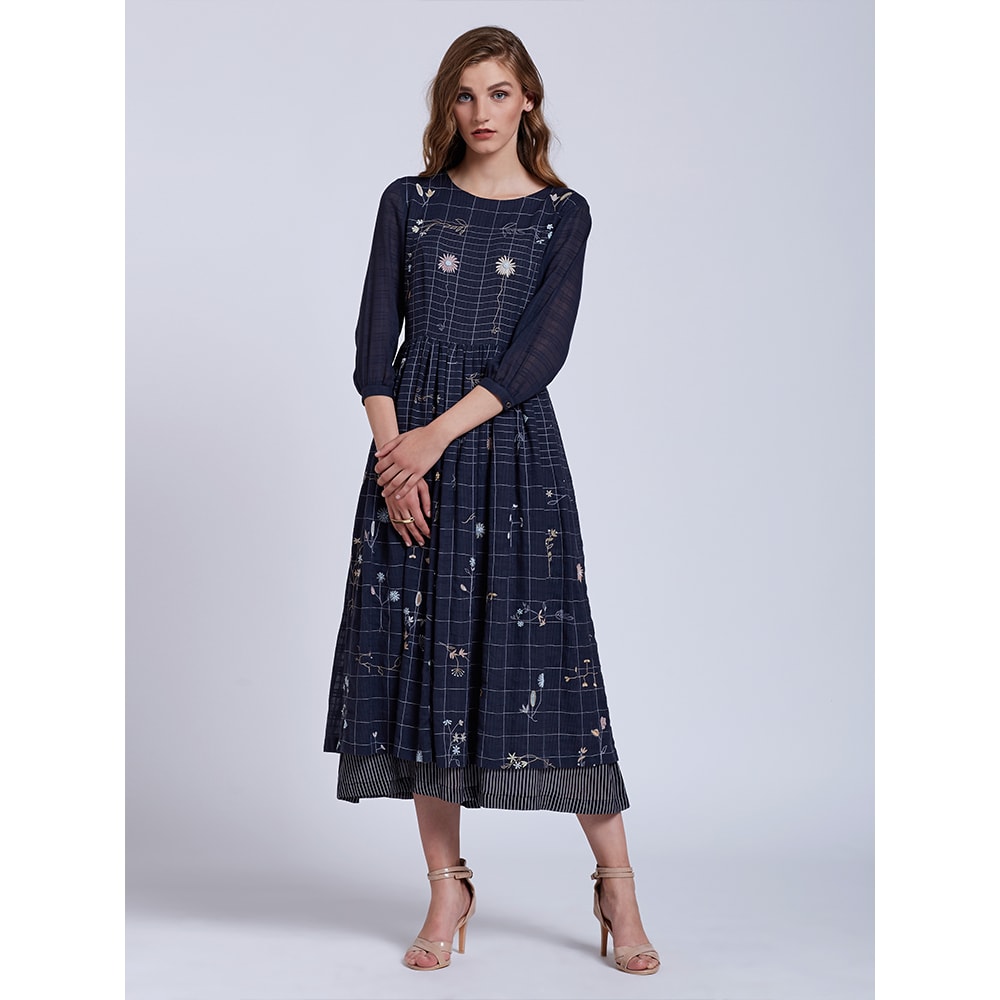
Doodlage Autumn 17' collection
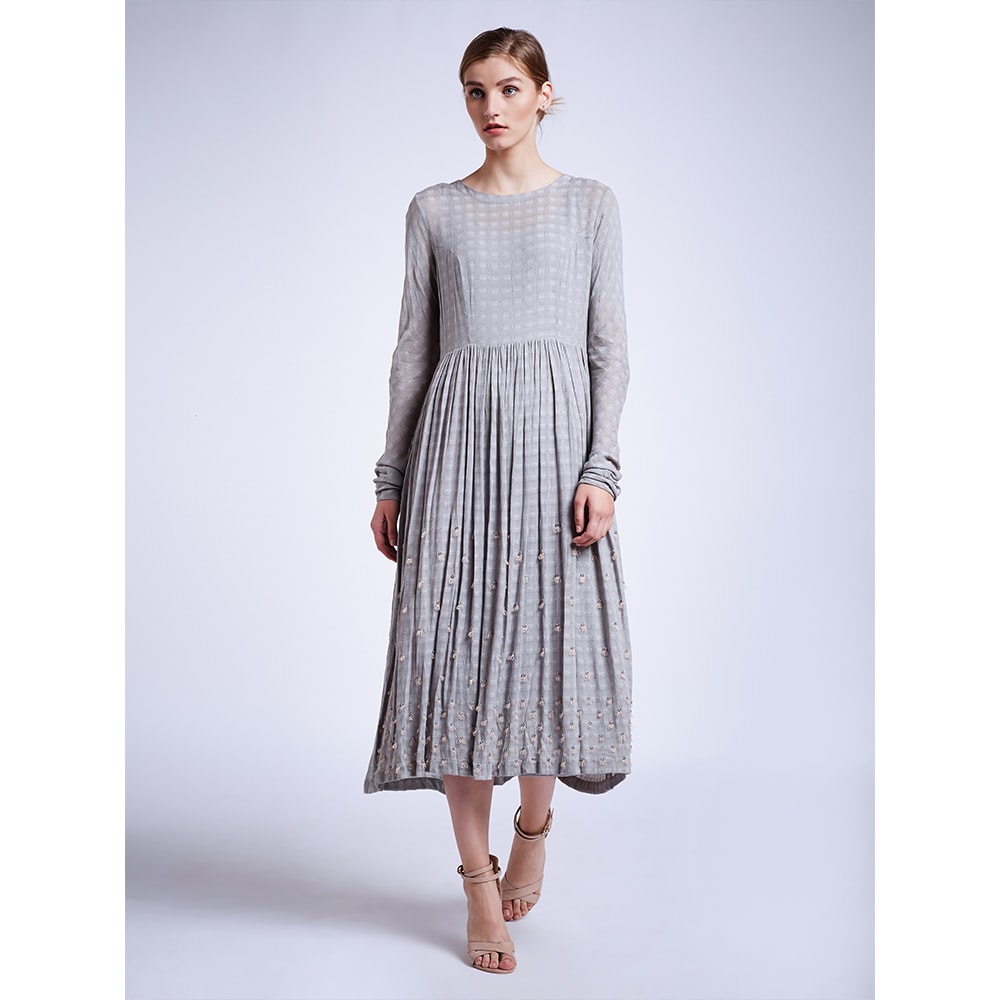
A piece of work that you admire?
Um. Currently, there are many good things that are happening in fashion and design in India. But I feel that fashion in India is still a growing space. The consumer is getting more developed and aligned as they are travelling more. They are getting involved in exhibition and art spaces. I have come across a lot of designers who are doing really well in product space as well as in fashion. A lot of aesthetics that I associate with, is now increasingly growing in India. It’s a great time for design in India. I recently came across a brand called Claymen . Their aesthetic is absolutely fabulous."I'm a fan."
How do you see the Fashion Industry growing in the next 5-10 years?
I think it’s going to develop a lot more, especially for sustainable fashion. There are just so many unexplored areas in fashion in India. The designer grows with the consumer as well. So if more and more people start investing in interesting designs, then a lot of innovative work is possible. For a long time the industry has focussed on traditional Indian attire but now you see a lot of interesting fashion brands coming in like Anomaly, Love Birds and the like. Now, all of them are able to sustain themselves. A couple of years back except for Rajesh Pratap, Rohit Gandhi & Rahul Khanna, there were hardly any names that would have survived the Indian fashion market. Now you see a lot of young labels doing interesting design work and sustaining themselves.
Is the consumer becoming more conscious about sustainability?
From back in 2012 when I was telling people that I was doing sustainable fashion—those terms were alien to them. They didn’t understand why I’m doing what I’m doing. Where is this waste I keep talking about? With social media and increasing communication, a niche of the consumer has become conscious towards it but there is still a long way to go. The niche group is at least acknowledging what’s happening and taking small steps towards improving what they buy and why they buy. Things are changing for the good.
How important is formal education in design?
Some people are just gifted as designers. They are right brain dominant. I’m not. I was always an analytical and hardworking person. I could find balance and curate well but it took a lot of time to learn the skills to cut the fabrics in the right patterns and especially with Doodlage, it was important for me to know pattern-making garment construction. It even today allows me explore garment creation along the lines of zero waste. So even if you are aesthetically gifted, getting a formal education would just add up to your skills as a designer. And in case you are not interested in that, do it on the job but learn techniques and skills.
A word of advice for people who want to get into design?
The important thing to keep in mind is to stop stressing. A designer over judges their own work many a time. There is no right and wrong design. You go back and forth all the time.

What do you see in interns who want to apply at Doodlage?
I have always been inclined to pick people who have are motivated towards sustainable—ethical fashion. I prefer people who want to learn more in this field than fabulously creative people because I feel there is a whole market out there for them. I want them to have the courage to start something of their own in the future. I love to teach them at least a little bit about what I do so that later they can venture into the broader spectrum of fashion.
How do I apply to Doodlage?
We always announce on social media. We do get a lot of applications, thankfully. We just see their work and their motivation about what we do. That’s pretty much how we hire.
What do you read about?
I don’t read books per say. I’m an avid reader of whatever is happening around the world regarding sustainable fashion. I like reading about various kinds of developments in fabrics. Fashion revolution is a portal worth having a look. Business of Fashion is a good resource to get some analysis on fashion developments.Center for sustainable fashion is another one. Material driven is an interesting portal that I have recently been a part of. They talk about various developments in fabrics, knits etc.